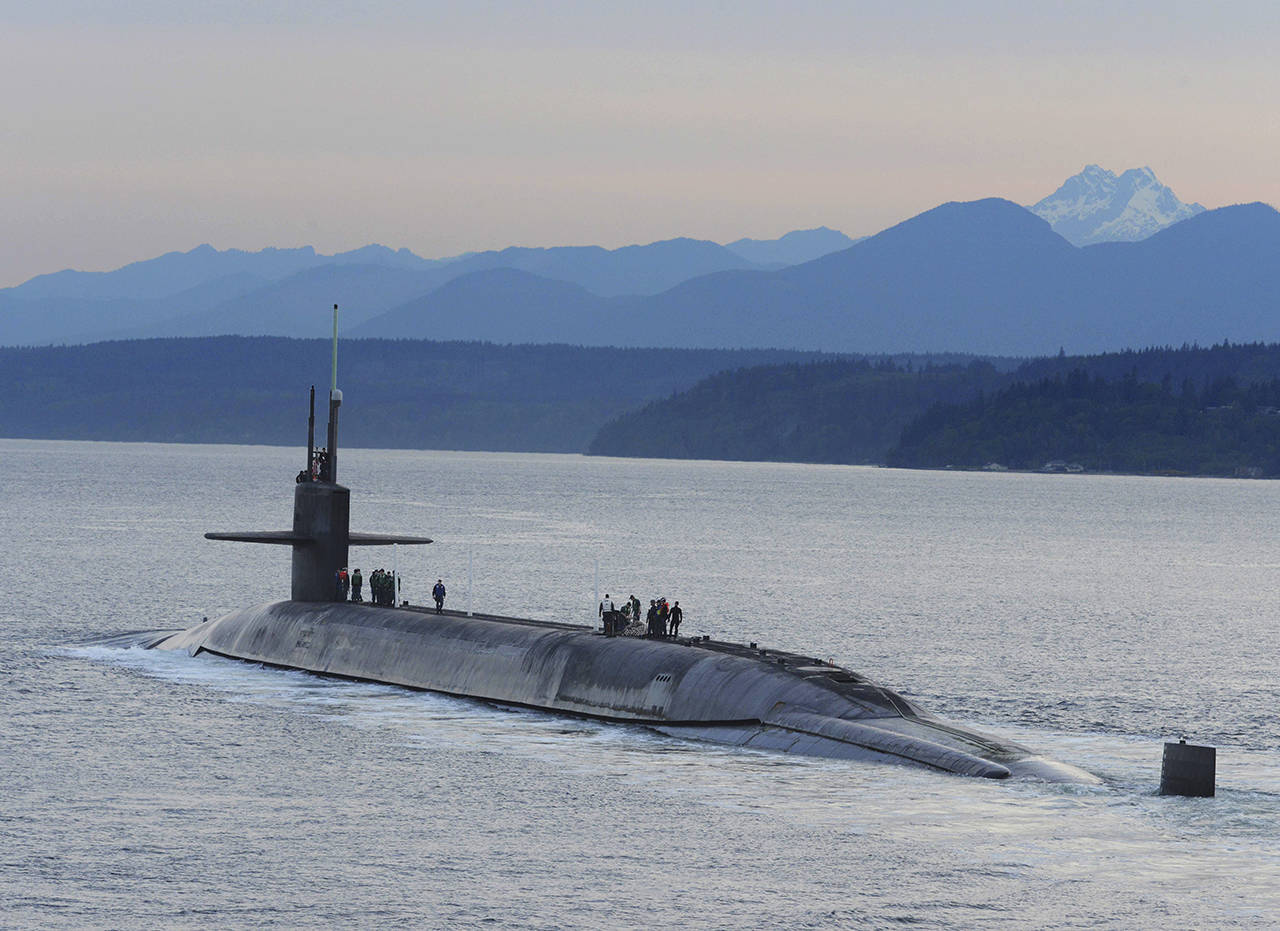By The Herald Editorial Board
The diversion of $3.6 billion from military construction projects across the nation and globe to fund some 175 miles of wall along the U.S. border with Mexico won’t affect military bases in Snohomish or Island counties, in particular the U.S. Navy stations in Everett and Oak Harbor.
This time around.
Following the refusal by Congress to allocate billions for the border wall, President Trump declared a national emergency and has used at least two loopholes to defy Congress’ “power of the purse,” reallocating a total of $6.1 billion of Defense Department funding. Earlier, $2.5 billion was diverted from money that Congress allocated for drug interdiction, claiming the wall will do that work better than the programs originally intended. Perhaps, but wasn’t that for Congress to decide?
Now, the Pentagon has released the list of more than 125 construction projects at military bases that will lose funding; at least temporarily. Among the projects is an $89 million pier at Naval Base Kitsap in Bangor that would have been used by the Maritime Force Protection Unit, which escorts submarines and their crews on their way to and from the Bangor naval base. The Bangor project was one of the largest individual projects, among a range of facilities that included weapon maintenance shops, equipment facilities, fire stations, roads, small arms ranges, care centers for service members and even schools for the children of military families.
The shuffling of money may be felt hardest in Puerto Rico, where $400 million in military construction was planned to support recovery efforts following Hurricane Maria. Another $770 million had been allocated for military projects at U.S. bases in Europe, where the United States already faces strained relations with NATO countries as well as the potential for Russian aggression.
Doubts remain about whether Trump’s wall is even an effective tool to slow the pace of illegal immigration.
U.S. Customs and Border Protection reported that illegal border crossings fell to 64,000 in August, down from 144,000 in May, and without any new sections of wall.
Additionally, illegal border crossings have never made up a significant percentage of undocumented immigrants. When it was still tracking these numbers, the Department of Homeland Security found that between October 2016 and September 2017, 700,000 foreigners in the United States, having arrived by plane or ship, were without documentation because they had overstayed their visas. A wall won’t fix that problem. During that same period, illegal border crossings numbered about 106,000.
Military officials are defending the shuffling of funds, by saying the money has been deferred rather than eliminated, but restoration of the funds will require reauthorization by Congress.
The question over reauthorization puts Congress in a difficult spot: Not reauthorizing the money jeopardizes legitimate projects meant to provide the facilities that the U.S. military needs across the globe to do its job. “Backfilling” the funding could be viewed by the Trump administration as tacit approval for his work-around following Congress’ refusal to grant wall funding, encouraging him to use the tactic again for this or any other perceived “emergencies” he wishes to declare.
Some members of Congress already are balking at reauthorization of those funds, among them U.S. Rep. Rick Larsen, the Second District Democrat, who is a senior member on the House Armed Services Committee.
“By circumventing Congress, the president is undermining the United State’s commitment to NATO members and treaty allies, all to pay for an ineffective and wasteful border wall. Taxpayers have already paid for these projects once,” Larsen said in a statement. “I will oppose any efforts in Congress to backfill these accounts.”
Absent a ruling from the courts on the tactic’s constitutionality — and lawsuits have been filed — it remains a seizure of the powers intended for Congress that could be used again by Trump and perhaps by a future presidential administration.
Those who see no problem with the president going around Congress to fund his own priorities, might consider their reaction to a Democratic president declaring climate change an emergency and reallocating military construction money or funding for other programs to protect coastal communities from rising seas and severe storms.
Talk to us
> Give us your news tips.
> Send us a letter to the editor.
> More Herald contact information.

























